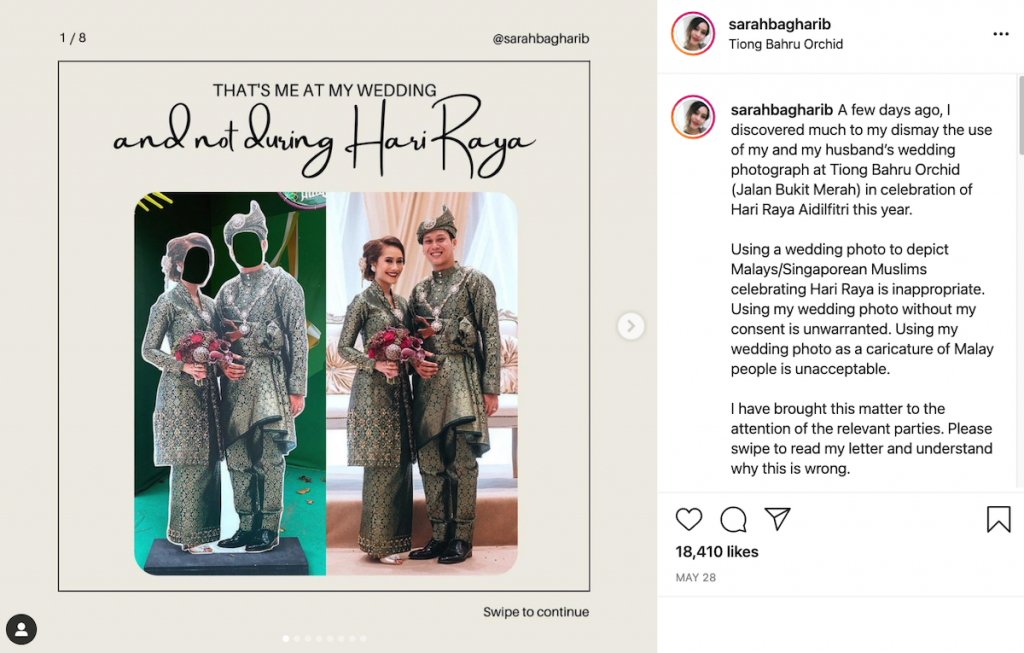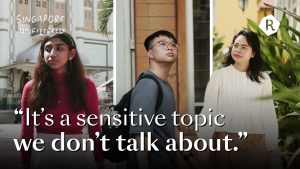Rice file photo.
There are some diseases you just can’t get vaccinated against. For instance, racism. Or at least the unwillingness to have an open discussion about race relations and the existence of ingrained cultural blindspots.
Sure, it’s uncomfortable. But one of the major blocks towards reducing biases both unconscious and intentional is something called “conversation”. Why would anyone avoid it? Human beings have held conversations for centuries, and everyone’s better off from it.
Race relations in Singapore; now that’s a conversation we need to have after a few (extra) exhausting weeks for minorities here. And we already have—from our double standards in calling out racism to the need to shift the definition of Singapore’s take on racial harmony.

But now we need to talk about how a certain statutory board—established to promote social cohesion and multiracialism—dug itself a deeper hole after a recent oversight that saw a Malay couple’s wedding portrait reduced to a trite caricatural prop. How the organisation refused to engage further with the people they wronged and went on to invalidate their distress over the experience. How the organisation missed out on an opportunity to address the issue head-on, dismissing the chance to hear out the concerns of citizens they’re supposed to engage with.
We also need to talk about how a certain public figure probably made things worse. How the former political representative, lacking a sense of nuance, branded the wronged party (or anyone seeking open conversations) as unscrupulous. How he failed to see the irony in calling for grace while simultaneously telling someone to stop being an easily offended snowflake.

Folks like Alfian Sa’at and Firdaus Daud have already touched on the flaws of cherry-picking quotes and offered thorough analyses on what the government body got wrong with its response.
What we’re offering on our end: three branches of a dialogue tree the next time government bodies, political figures or anyone else find themselves in a position where they have to issue a defensive statement about race relations. Since respecting racial diversity is such a “work-in-progress” in Singapore, these would eventually come in handy sometime.
The Wrong, Chaotic Evil Path
• “Stop rocking the boat to preserve our fragile racial harmony.” This is the most common take on social media. No matter how genuine the concern is, the importance of preserving the status quo outweighs uncomfortable discussions on racial relations. Often accompanied by callbacks to race riots in the ’60s.
• Utilise hostile, defensive language. “We reject”, “without basis,” “at any cost”.
• Alternatively, passive-aggressiveness. “We find this odd.” “This is untrue.”
• Explain away the racism or resort to semantics. “Let’s not go overboard and call this racism, this is more like insensitivity”. “It’s just a mistake what, move on”.
• Play the devil’s advocate. Personal lived experiences need to be debated, apparently.
• Shut down honest conversations by blaming it on Critical Race Theory, Cancel Culture or anything deemed as Western ideology.
• Call people snowflakes.
The Lawful Neutral
• Cautiously acknowledge the matter at hand, offer broad recognition that Yes, This Is A Problem.
• “We don’t have all the facts” or “I’m not at liberty to say”. Thereby relinquishing any need to take a position or a stance right now. It can wait until after investigations have concluded or after people have forgotten about it.
• Form sentences that don’t really say anything specific. Offer overly general solutions that could fix any problem. Hope for the Barnum effect.
• Evade talking about the deeper issue and make generic calls (for society, community, species, etc) to do better for one another.
The Constructive, Neutral Good Road
• Fully acknowledge the issue, follow through with a sincere, unconditional apology where needed. “We take full responsibility for the oversight.” No “sorry, but…”
• Be open to criticism and be the bigger party/person, no matter if one feels personally attacked. Take the high ground and stay classy.
• Display some sensitivity to the emotions of the affected minority party. Accept that blindspots exist and that nobody should brush off another’s experience when it comes to racial affronts. Understand why they feel that way.
• Realise that racism is not binary. It’s not about deciding if the person/action should be deemed racist or limiting racism to typical acts of abuse, harassment, or violence.
• Don’t make assumptions about hidden agendas. Don’t make assumptions at all.
• Advance the conversation by opening the floor to others to have their say about their concerns, preferably IRL instead of written messages. Provide opportunities for them to share. Hear them out, not speak over them.
• Actually put the things learned into practice and keep at it. Then perhaps diversity and inclusion wouldn’t be such a mountainous climb even after all these years.
The point here is that you can’t push any constructive discussions forward if these incidents devolve into an argumentative skirmish that ends in a winner-loser situation. In the process of edging out the last word on the issue, the conservative party invalidates the other’s experiences just so they can stick to the safety of their current worldview.
But for a proper, productive conversation to happen, we would need to start thinking instead about how we would want to be spoken to if we were on the other side of it. Would you want your experiences and emotions questioned and discredited? Or would a willingness to acknowledge, learn, and make amends establish the social cohesion and harmony to cure the ills of racism?
Have something to say about snowflakes? Write to us at community@ricemedia.co.







